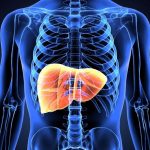
If you’re one of the millions seeking The One this Valentine’s Day, here’s a tip: Try swiping less. This is the main message from a new study that found excessive swiping on dating apps can cause partner choice overload, among other issues. “Dating apps may give us the impression that there is always someone better just around the corner, so we keep on swiping,” said study author Jörg Matthes, a professor of communication at the University of Vienna in Austria. “That’s not necessarily true: You may not need 99+ matches to find love.” (For the uninitiated, swiping right on a dating app means you’re interested in someone; swiping left means you’re not. Apps reward frequent swiping with more choices.) In the study of 464 dating app users between 16 and 25 years of age, those who swiped excessively were more likely to feel like potential partners were out of their league, fear being single, and /or experience partner choice overload. This was true if people listened to their gut and swiped quickly or gave potential dates more thought before swiping left or right. The more a person used dating apps, the more likely they were to be excessive swipers, the study showed. Some people use dating apps excessively, similar to compulsive gambling, Matthes said. “Excessive use can have negative psychological effects on people,” he said.… read on > read on >


























-300x200.jpg)










